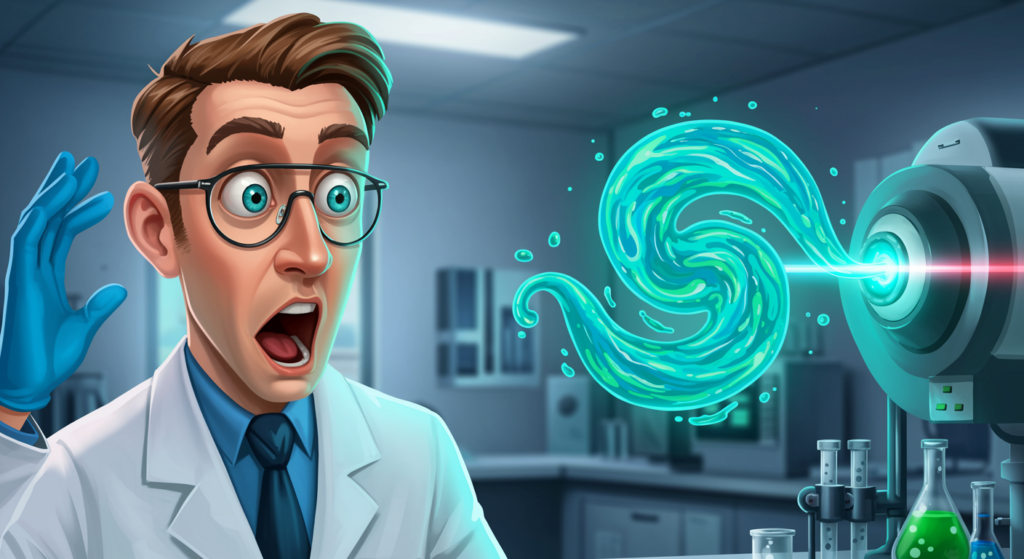
Scientists Discover New Color Called Olo
What Is This New Color? The Unprecedented Discovery
In a breakthrough that redefines human perception, scientists have uncovered a new color named Olo, an intensely saturated blue-green hue that defies the everyday visible spectrum. This color emerges only through cutting-edge techniques that directly target the eye’s photoreceptors, offering a glimpse into colors we’ve never naturally seen. Imagine peering into a world where hues are more vivid than the deepest ocean or the freshest spring leaves—what if Olo could change how we experience reality?
Researchers at UC Berkeley achieved this by using specialized lasers to stimulate specific eye cells, creating a perceptual experience that’s both thrilling and mind-bending. With only a handful of people having witnessed it so far, Olo highlights how technology can expand our senses in ways we never thought possible.
The Science Behind This New Color: How Was Olo Created?
Our eyes rely on three types of cone cells to detect color: those sensitive to blue, green, and red wavelengths. Typically, these overlap, limiting the colors we perceive, but the discovery of this new color flips that script. The UC Berkeley team invented a device called Oz, which precisely targets the green-sensitive cones with lasers, isolating their response in a way nature doesn’t allow.
This innovation means we’re not just seeing shades we’ve always known; we’re venturing into uncharted territory. For instance, think about how a sunset blends colors—Olo takes that intensity and amplifies it beyond anything in the natural world.
The Experiment: Bringing the Unseeable to Life
In carefully controlled tests, just five volunteers experienced Olo, describing it as a “profoundly saturated teal” that made everyday colors look dull. This setup involved mapping the retina and firing lasers at exact points, a process that’s as precise as it is revolutionary. Have you ever wondered what it would be like to see colors that don’t exist in your daily life? This experiment makes that a reality, albeit for a select few.
The results were consistent, with participants reporting an overwhelming sense of novelty, proving that this new color isn’t just a trick—it’s a verifiable expansion of human vision.
Why Can’t Everyone See This New Color?
Olo remains elusive because it doesn’t occur in nature or on any screen we use daily. Natural light always stimulates multiple cone types at once, but Olo isolates just one, making it impossible to replicate without advanced tech. This means you won’t find it in your phone’s display or a painting—it’s a color locked away until science unlocks it.
- It can’t be shown on monitors or printed on paper due to the way digital and physical media mix colors.
- No pigment or light source can mimic the exact stimulation needed.
- Ultimately, Olo is a personal experience, tied to the individual’s retina and the technology involved.
If you’re curious, consider how colorblind individuals miss certain hues—Olo takes that concept further, showing what might be possible with targeted interventions.
What Does This New Color Look Like?
Those who’ve seen Olo describe it as an extraordinarily vibrant blue-green, far more intense than the richest teal. It’s like comparing a faded photo to a high-definition image—Olo’s purity stands out in a way that’s almost otherworldly. One test subject called it “jaw-dropping,” emphasizing how no existing color comes close.
| Property | Olo | Teal (Closest Known Color) |
|---|---|---|
| Saturation | Extremely high | Moderate to high |
| Wavelength Range | Artificially targeted | Natural overlap |
| Accessibility | Laser stimulation only | Visible to everyone |
| Reproduction | Impossible without tech | Easily reproducible |
This comparison underscores why Olo feels so unique—it’s not just a shade; it’s a breakthrough in how we define new color experiences.
The Significance: Why Is This New Color Important?
Beyond its wow factor, Olo’s discovery is reshaping fields like neuroscience and vision science. It opens doors to helping people with colorblindness experience a fuller palette, potentially through similar tech. For example, imagine someone with red-green color blindness suddenly seeing distinctions they’d never known— that’s the real-world potential here.
- Advancements in treating vision disorders, like simulating experiences for research on retinitis pigmentosa.
- Exploring how animals perceive colors, which could lead to new insights in biology.
- Even virtual reality might evolve, offering users new color sensations for immersive experiences.
This isn’t just about science; it’s about enhancing everyday life and challenging our limits.
Can This New Color Change Our View of Reality?
The emergence of Olo proves that human vision isn’t set in stone—it’s adaptable with the right tools. What if we could engineer more colors like this? It might transform art, design, and even therapy, letting us explore perceptions we’ve only dreamed of. Experts are excited, with some debating if it’s truly a new color or a clever illusion, but most see it as a game-changer.
Expert Reactions and Future Paths
Vision scientists from various institutions, including those at UC Berkeley, are refining the Oz device for wider use. They envision applications in medicine and entertainment, where this technology could simulate new sensory experiences. As research progresses, who knows what other hidden colors might emerge?
One key point: while skeptics argue it’s perceptual, the consistent results suggest we’re on the brink of something bigger in color science.
Frequently Asked Questions About This New Color
Can I Experience Olo Myself?
Right now, seeing Olo requires participating in a controlled study with retinal lasers—it’s not something you can try at home. This exclusivity makes it all the more intriguing, but advancements might make it more accessible soon. What would you do if you could see a color no one else has?
How Do We Know It’s Truly a New Color?
Scientists confirm Olo’s novelty through repeated tests where participants describe unique sensations not matching any known hues. This consistency, backed by data from sources like Smithsonian Magazine, sets it apart as a legitimate new color discovery.
What’s Next for Olo?
Future research could lead to treatments for vision issues or even new art forms. By expanding access, we might integrate this into VR or education, helping people understand color in fresh ways.
Conclusion: Embracing the Wonders of Color Science
Olo’s revelation shows we’re just scratching the surface of human perception, with technology paving the way for exciting possibilities. From aiding those with visual impairments to inspiring new creative fields, this new color could spark a renaissance in how we see the world. What are your thoughts on this discovery—could it change your perspective on color?
If you’re fascinated by science and innovation, share this post, leave a comment below, or explore more on vision breakthroughs. Let’s keep the conversation going and see where this leads next.
References
- UC Berkeley News. (2025). Scientists trick the eye into seeing new color Olo. Link
- YouTube. (n.d.). Video on color vision experiments. Link
- Live Science. (2025). Scientists hijacked the human eye to see a brand new color. Link
- Popular Mechanics. (2025). The Olo color and Oz device explained. Link
- YouTube. (n.d.). Additional video on vision tech. Link
- YouTube. (n.d.). More on color perception. Link
- Smithsonian Magazine. (2025). Scientists discover a new color seen by only five people. Link
- YouTube. (n.d.). Expert discussion on new colors. Link
new color, Olo color, human vision, photoreceptor stimulation, science breakthrough, color perception, retinal laser, vision science, UC Berkeley discovery, saturated hues







